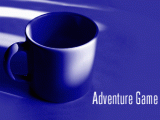 While there are quite a few steadily recurring, deadline–based game creation compos currently in existence, like Ludum Dare, Java4K and PyWeek, one of the longest-running1 monthly competitions still ongoing is in fact the low-key Monthly Adventure Game Studio contest, or “MAGS” for short. Chris Jones’ engine has spawned a close-knit community that constantly produces periodic communal activities like the adventure series “Reality on the Norm” and a yearly award ceremony.
While there are quite a few steadily recurring, deadline–based game creation compos currently in existence, like Ludum Dare, Java4K and PyWeek, one of the longest-running1 monthly competitions still ongoing is in fact the low-key Monthly Adventure Game Studio contest, or “MAGS” for short. Chris Jones’ engine has spawned a close-knit community that constantly produces periodic communal activities like the adventure series “Reality on the Norm” and a yearly award ceremony.
But why feature MAGS on this particular website, exactly? While we have obviously discussed a plethora of adventures both free and commercial before, doesn’t this begin to dig too deep into hobbyism?
First, whilst the basic idea of the compo may be deviously simple, it comes packaged with a twist every month: Each subsequent contest, as it stands, follows the creative guidelines defined by the previous winner! Such a constantly changing, personalized rule set makes for distinct competitions that always exhibit a different cross-section of genre, style and gameplay. Indeed, many participants seek to broaden their horizons also by battling the perceived limitations and constraints of the adventure-making engine itself.
April’s rule set was defined by Dualnames, who settled on the “One Room One Month” (OROM) format:
I know it may sound silly. But keep it simple, keep it plain. We’ve seen best of AGS games in the OROWs, and I’ve always wondered, if you had to have one room, what could you make more in a month. Keep it two people team MAX! Calin and Ben304 aren’t allowed to team up!
Second, for the very first time in five years, the compo saw no entries at all in March; in fact, this was the first-ever MAGS to not have an entry ever since the activity officially got its start in the June of 2001.2 April - the month that I have chosen to dissect here - was luckily vastly more successful, and as such raised my interest in addition to its prolific participants. What better moment to discuss the competition than to find it revitalized!
Third, the MAGS website places great emphasis on all voters playing through each and every entry before casting their vote. Therefore, after the jump, I have alphabetically taken a look at all of April’s titles, even if the inherent clashes of style, scope, direction and quality do complicate this task considerably.
Fourth, if Destructoid can report on Ludum Dare (which Nabeel has done on this website in the past), then we can definitely talk about MAGS. Off we go with part one – parts two and three of the article will be posted on the website over the following days.
Each segment has a hyperlink to a download for the entry in question; the general voting page for all entries can be found here. Voting continues until the 17th of May, so you still have some time to familiarize yourself with the entries.
AGS Footballer Tech Demo
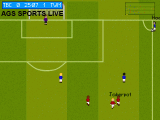 Tzach Shabtay’s AGS Footballer Tech Demo seeks to replicate both the look and feel of the classic Sensible Soccer, and does so really quite admirably (though admittedly not quite so infuriatingly as Sensible Software’s TAC-2 destroying Amiga classic - whether this is a bonus or a minus is up to you!).
Tzach Shabtay’s AGS Footballer Tech Demo seeks to replicate both the look and feel of the classic Sensible Soccer, and does so really quite admirably (though admittedly not quite so infuriatingly as Sensible Software’s TAC-2 destroying Amiga classic - whether this is a bonus or a minus is up to you!).
What we have here is a football game demo built to cope with - rather than take advantage of - the obvious constraints of the AGS engine. Therefore, the first thing of note here is not so much the actual quality of a functional AI and physics, but the fact that these exist in the first place! Chris Jones’ engine was obviously not designed with either in mind, and the developer’s effort in crafting these in is laudable.
Gameplay is built upon a two-button shoot/pass set-up. I’ve always vastly preferred the rather sensible one-button method of tapping for a pass and pressing to shoot, though, so having two buttons in AGS Footballer does go against the grain of the play style I was otherwise expectant of, especially since Shabtay merits the Sensible World of Soccer as his inspiration
“…for the controls, although I haven’t played it in years, so I did it from memory… In fact, in the first beta there was only one button like the original swos, but I couldn’t pull it off, so added the second button…”3
The strict month-long time-limit of the competition therefore obviously played a major hand in the decision. Overall, passing functions better than shooting, which sometimes refuses to work how and when I would have preferred it to.
 The physics are relatively neat; there’s quite a bit of vertical depth to the kicks – you can supposedly affect the kick height with the arrow keys – and even curveballs are accounted for. Every now and then, the AI (goaltenders especially) does goes perfectly ball-istic with its shots, though, and also get what I can only describe as spastic attacks.
The physics are relatively neat; there’s quite a bit of vertical depth to the kicks – you can supposedly affect the kick height with the arrow keys – and even curveballs are accounted for. Every now and then, the AI (goaltenders especially) does goes perfectly ball-istic with its shots, though, and also get what I can only describe as spastic attacks.
Actually maintaining control of the ball remains somewhat elusive, further contributing to moments of chaos on the field. The problem is somewhat exacerbated by a rubbery automatic focus shift. It need be emphasised, however, that many of these issues are the by-product of the existence of the switch mechanic itself, and were similarly - if to a lesser degree - present in Sensible Soccer.
Using manual player switch redeems most of the aforementioned issues sans some accidental passes, which are caused by the same key being used both for switching and passing. According to a Making Of article on Sensible Soccer, the Sensible team sought to account for these player-selection related issues by keying the character not just based on where the ball was, but also “from the direction you’re pressing on the joystick which player you’re drawing on.”
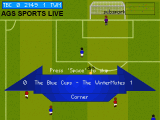 By far the best aspect to Shabtay’s ballin’ entry to the compo is doubtless its high, high degree of polish. The game is not only extremely feature-full for a tech demo, with a good rudimentary set of graphics, controls and gameplay, but also equally polished in terms of in-game menus, available settings and documentation, which are all equally solid work and presented clearly.
By far the best aspect to Shabtay’s ballin’ entry to the compo is doubtless its high, high degree of polish. The game is not only extremely feature-full for a tech demo, with a good rudimentary set of graphics, controls and gameplay, but also equally polished in terms of in-game menus, available settings and documentation, which are all equally solid work and presented clearly.
Lastly, what better way to pay homage to the supportive AGS forums than to populate the teams with long-time discussants? In AGS Footballer, you’ll find yourself playing with or against Vince Twelve and Dave Gilbert, among many, many others. The teams are even set up as a contest between the Wintermute Engine and AGS!
Alphabeta – A Room of Words
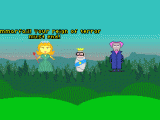 Alphabeta – A Room of Words, Ivan Mogilko’s grammar-themed entry, is ostensibly a story about an evil wizard, Grammarfail, who kidnaps the crown prince of the Kingdom of Fairytales in order to, uh, pervert his literary abilities. The fair sorceress Alphabeta, our protagonist, is then booked to straighten out the whole shebang.
Alphabeta – A Room of Words, Ivan Mogilko’s grammar-themed entry, is ostensibly a story about an evil wizard, Grammarfail, who kidnaps the crown prince of the Kingdom of Fairytales in order to, uh, pervert his literary abilities. The fair sorceress Alphabeta, our protagonist, is then booked to straighten out the whole shebang.
The game begins with a delightful and cute, play-like prologue (not unlike those of McGee’s Grimm) that cleverly taps into the otherwise questionable narrative potential of a… a spelling game? As such, the concept needs no further selling; only, as this introduction comes to an end, with Alphabeta teleporting into Grammarfail’s castle to combat the evil typographer, no “room of words” exists, and the castle is entirely pitch-black.
The author, prompted by the aforementioned zero-entrant April catastrophe, swore to take part in this month’s competition no matter what, and describes the game as a “vastly unfinished piece” and “a game without gameplay”4; in other words, there’s no way to rock this thang. Too bad.
Next!
Dead Hand: Chapter 7 The Bridge
 Limpingfish’s Dead Hand: Chapter 7 The Bridge is effectively a five-minute long first-person bait & switch that has been developed with the aid of the AGS Panorama3D module – admittedly to a pretty neat effect: Instead of having to work with a still screen, you can change your viewpoint, hover around the scenery for clues and even move in a slightly more spaced-out version of the classic step-by-step Dungeon Master style.
Limpingfish’s Dead Hand: Chapter 7 The Bridge is effectively a five-minute long first-person bait & switch that has been developed with the aid of the AGS Panorama3D module – admittedly to a pretty neat effect: Instead of having to work with a still screen, you can change your viewpoint, hover around the scenery for clues and even move in a slightly more spaced-out version of the classic step-by-step Dungeon Master style.
Yup, Dead Hand might only have five minutes worth of gameplay, but those five are, uh, well spent! There is a definite sense of an aesthetic and an art direction at work here, and combined with the use of an uncommon first-person viewpoint, the suspense of this murder mystery carries over rather well.
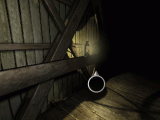 Unfortunately, the game did bug out on me on my first playthrough, with my cursor turning into a permanent red X. After restarting – with no way of skipping the introduction, boo hiss – I was finally able to get through that one last minute that I was yet to see.
Unfortunately, the game did bug out on me on my first playthrough, with my cursor turning into a permanent red X. After restarting – with no way of skipping the introduction, boo hiss – I was finally able to get through that one last minute that I was yet to see.
The downside to the aforementioned module is that it does pixelate (voxelate? How does this thing work?) graphics considerably during camera pans, only to render the scenery properly as you pause. Curiously, this is utilized to great effect in this particular MAGS entry: The idea of having to stop to look when focusing on elements works excellently within the constraints of a detective story, but is probably bound to cause problems for other types of fiction.
Dead Hand is short and sweet, and there are decidedly no regrets for trying the entry out. In the meantime, it’s probably better to take a step back and let Limpingfish develop some more content for the game! (You could check out some of his earlier works in the same style, for instance.)
Dead Pixels
![]() Folks, I can’t deny that Nathan Hamley’s Dead Pixels (title in reference to the pixel hunting within, I’m sure) made me reconsider my commitment to this write-up. While this uncertainty luckily came to pass thanks to the subsequent entries, at this stage I could not help but wonder about the legitimacy of the topic. The problem, simply put, is this: How to best deal with an entry that is generic yet formally incoherent, with puzzles arbitrary yet repetitive, and downright hostile towards the player?
Folks, I can’t deny that Nathan Hamley’s Dead Pixels (title in reference to the pixel hunting within, I’m sure) made me reconsider my commitment to this write-up. While this uncertainty luckily came to pass thanks to the subsequent entries, at this stage I could not help but wonder about the legitimacy of the topic. The problem, simply put, is this: How to best deal with an entry that is generic yet formally incoherent, with puzzles arbitrary yet repetitive, and downright hostile towards the player?
How to best negotiate a game that sports a lead character that takes a full twelve seconds (12!) to walk from one edge of a screen to another; a game that has its background sculpted from a photograph, in which a low amount of hoverless and response-free hotspots are either blatantly obvious or altogether indiscernible?
In all fairness, it does bear mention that Hamley himself admits how he “can’t code for cookies” and that his “next project’s programming … won’t be done by me.”5 Ah well. What can one add? Instead of being an illustration of ability or quality, perhaps the entry served the purpose of getting the author more acquainted with the engine, or the constraints of the competition? If that was the case, then no more need be said.
Therefore, let me be brief, very brief: The frame story here is that the local net café is closed down, and what follows is that you have to rid the world of a solitary zombie. Despite all these garish flaws, outlined above and present in literally every aspect of the entry, it can be played from beginning to end and thus completed. Too bad getting through should be such an exercise in frustration.
Dead Pixels wraps up the first part of our coverage of MAGS April. The complete list of the entries in question can be accessed here on the MAGS website, and the subsequent parts of this article - to be published soon - will contain a longer discussion of Eternally Us as well as delve into the final trio of entries, Hard Space, Snakes of Avalon and Space Pool Alpha.
- cf. Ludum Dare November 2002, Java4K 2002 and PyWeek August 2005 – the IGF doesn’t quite count. Other examples are more than welcome! [↩]
- http://www.bigbluecup.com/yabb/index.php?topic=40254.msg534461#msg534461 [↩]
- http://www.bigbluecup.com/yabb/index.php?topic=40639.msg539760#msg539760 [↩]
- http://www.bigbluecup.com/yabb/index.php?topic=40476.msg539050#msg539050 [↩]
- http://www.bigbluecup.com/yabb/index.php?topic=40778.msg539542#msg539542 [↩]

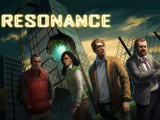
Thank you Martyn for that review, I enjoyed it immensely!
The “spastic attacks” remark made me laugh, you can rest assured that this will be fixed in later versions, so keep watch…
Tzachs, the pleasure is all mine! I think it’s simply fantastic that so many of this April’s MAGS entries should lend themselves to iteration, polish and updates. What this tells me is that the projects were simply not conceived as short-term competition entries, but also as a solid foundation for future work.